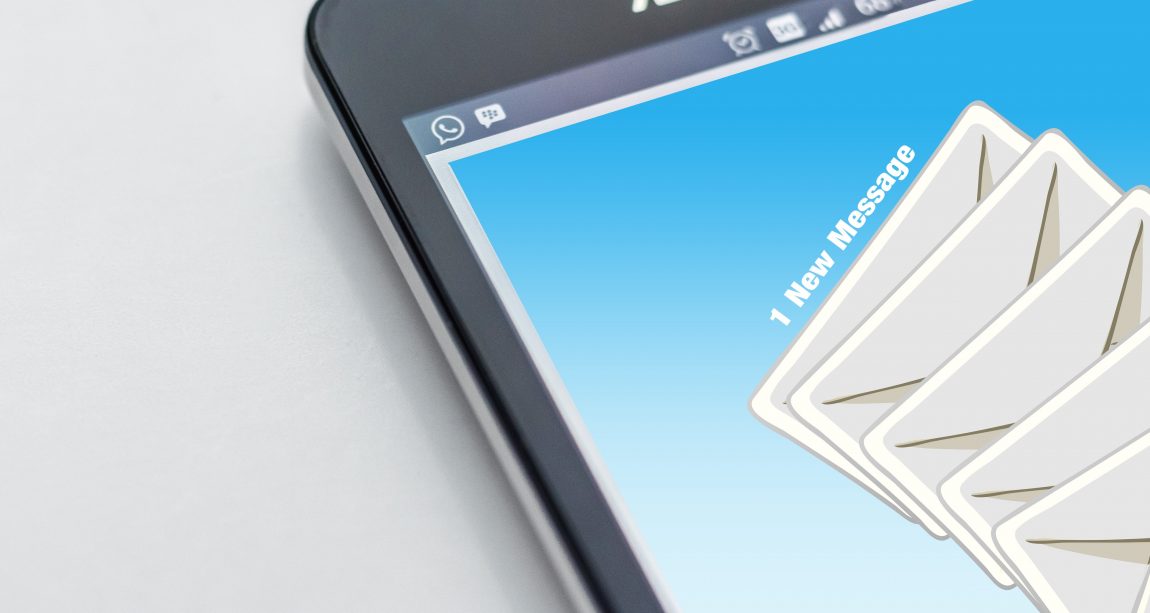Five Don’ts of B2B Email Marketing
by MGB2B
As a B2B marketer, maintaining a positive relationship is vital to your sales funnel. One of the best ways to do that is through B2B email marketing. It’s one of the most productive lead generation tools, but there are many ways to overstep your boundaries. When it comes to content, accessibility, and frequency, here are five things to keep in mind as you construct your next email campaign.
1. Sending Too Frequently
Many things are better in moderation, and marketing emails are no exception. We know what you’re thinking: we just told you that staying in touch with your customers is important. But flooding their inbox can have the opposite effect. Your customers receive hundreds of emails like yours, and it’s your job to ensure your email doesn’t get lost in the clutter. By sending emails less frequently, your customers will be less likely to feel badgered and opt out of future communications.
2. Lack of or Excess Personalization
There’s lots of talk of personalization these days, and with good reason. Consumers want to feel attended to and known. In fact, 82 percent of marketers reported an increase in open rates through email personalization, while 75 percent believe that personalization yields higher click-through rates. But keep in mind, this is more than simply a “Dear So & So.” It’s about knowing what your customers want. Sending them emails with products that match their previous interactions with you is one way to do it. But if you send them emails for products that don’t match their interest, or worse, products they’ve already purchased, your emails will become more white noise in their inbox.
This has to be done with a deft hand, however. Too much personalization can be a turn off in a creepy, big brother sort of way. It’s all about balance, folks. Fine tune your efforts so personalization is gradual, purposeful, and accurate.
3. Mobile-Unfriendly Layout
Though people still use their desktops, more and more people stay on top of their email from their phones. It’s important to make sure your content is optimized for all devices. If your images don’t load or your text is wonky, you can expect a swift delete.
4. Poorly Written Content
Customers are savvy. An elementary voice, grammatical errors, or poorly written content suggest your company shouldn’t be taken seriously. Furthermore, body copy that’s too wordy will be a turn off because no one has the time to read a tome.
5. Bad Subject Line
The subject line is the first written content your customer sees, and will define whether they open or delete it. Short, to the point, with just enough hook to pique their curiosity is the way to go. Otherwise, your email content will never be seen.
Considering that today’s marketers need to do more with less, email marketing gives us a whole lot of bang for our buck. And while other marketing trends come and go, email marketing remains a workhorse. To use it to its fullest potential, make sure you keep yours in line with the tips above.
Continue ReadingB2B Myth of the Week: All Mobile-Friendly Sites Are Created Equal
by MGB2B
The Myth: All Mobile-Friendly Sites Are Created Equal
The Truth: Unless Your Site’s Responsive, It’s Not Really Mobile-Friendly
Gone are the days of browsing the Internet on a desktop alone. Today’s B2B buyers are constantly on the move. Meetings. Traveling. Multitasking. You name it. Today’s websites need to adapt to cater to these on-the-go decision makers. How? By being responsive. Responsive web design focus on maintaining readability across all devices. Viewing is compatible despite window or screen size. This seemingly small factor is of utmost importance for all businesses, especially B2B brands. Here’s why:
- Buyers Are Using Mobile More Than Ever. According to Hubspot, 49% of B2B researchers who use mobile for research are doing so while at work. Therefore, mobile devices are crucial to buying decisions. B2B users expect their experience on mobile to be just as seamless as on a desktop. But just because a website can be accessed on a mobile device doesn’t mean the experience is seamless. If your website isn’t responsive, the page most likely does not fit on a mobile screen. This means your audience has to zoom in and out, scroll left and right, and finagle their screen before they can get the information they want. In contrast, responsive sites ensure your information is accessible across all platforms – smartphone, tablets, laptops, and desktops. A responsive web design ensures your website leaves buyers with a great experience. Remember, the more your buyer has to hunt and peck, the more likely they’ll leave (and go to your competitor).
- Having a Responsive Website Lowers Maintenance Time and Cost. When the shift from desktop to mobile first took off, many companies developed a separate mobile website. If your company is still using this method, you have two sites to update and manage. Needless to say, maintaining two websites is much less efficient than one responsive site. It doubles your workload when changes are made, and it’s not cost-effective in the long term.
- Google Prioritizes Mobile-Friendly Sites. Google constantly evolves its algorithm to ensure the best search results. In 2015, Google changed its algorithm to prioritize mobile-friendly sites. This means that websites that are not compatible with mobile tech get displayed much lower in search results. In addition, Google recently rolled out a mobile-first index – which means it sees your mobile site as your primary website. These updates alone should be encouragement enough to add responsive web design to your marketing to-do list.
The digital world is moving pretty fast, and it doesn’t look like it’s slowing down anytime soon. As the shift from desktop to mobile grows more significant, it’s imperative you create a seamless user experience for your buyer. Reducing the time spent on site maintenance and upping your search rankings doesn’t hurt either. Don’t lose potential leads – incorporate responsive web design into your marketing plan. Have questions about where to begin? Drop us a line.
Continue Reading


